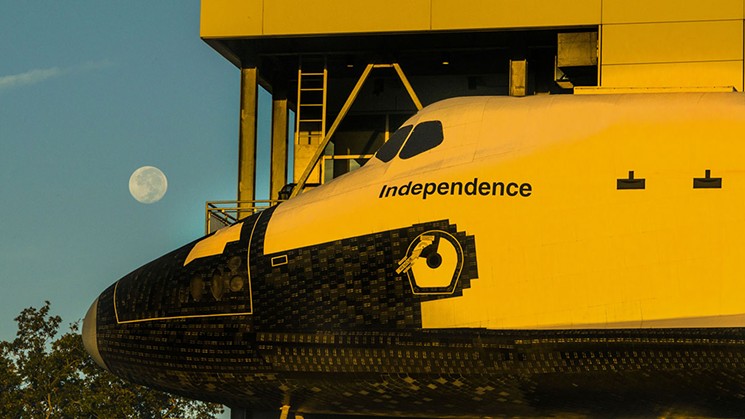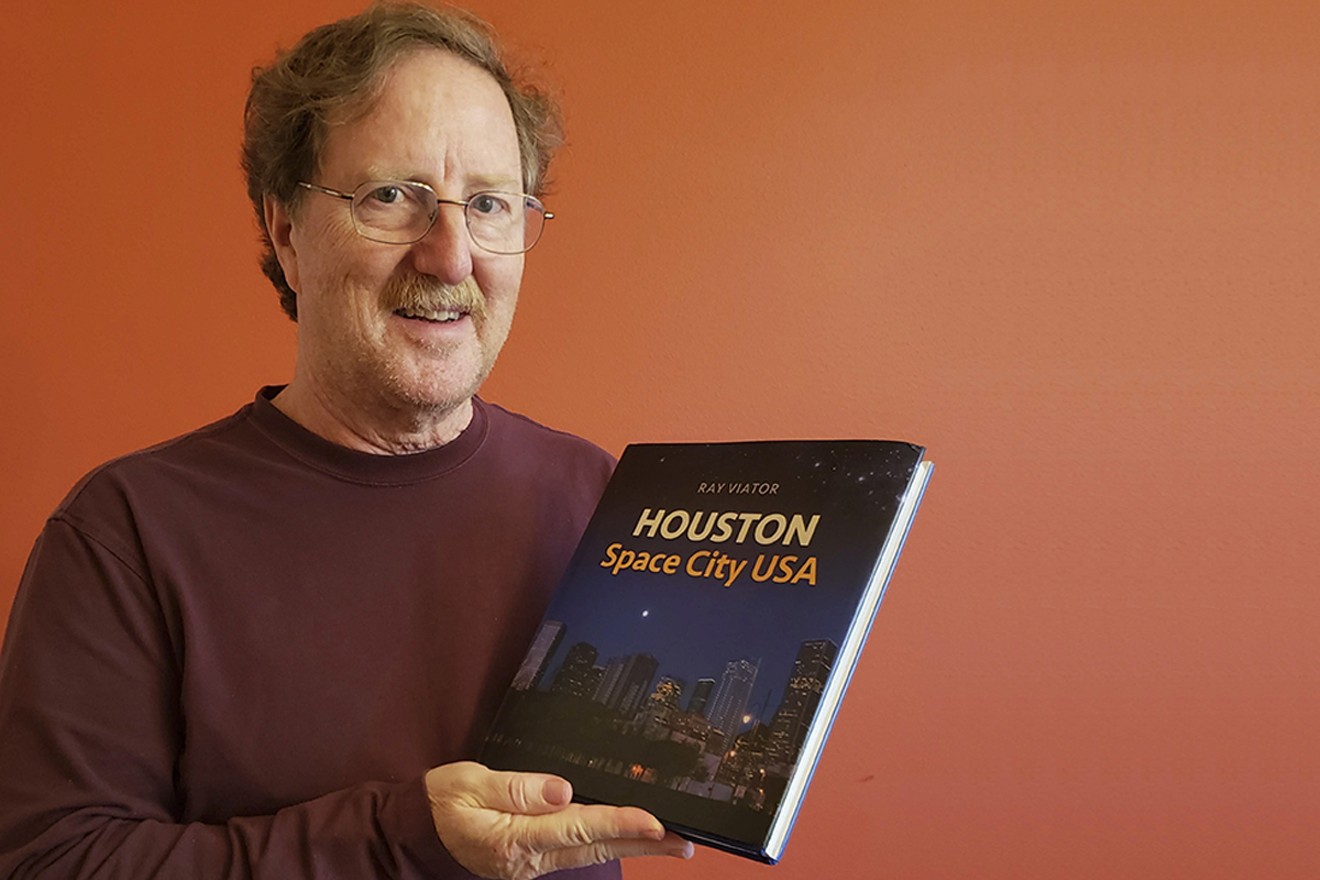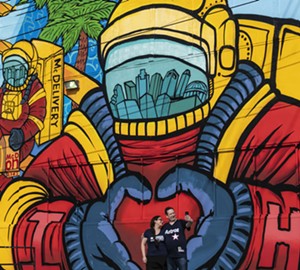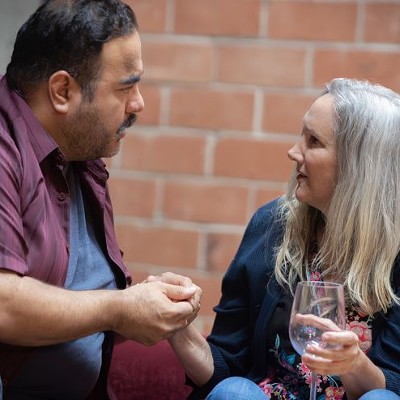"Houston, Tranquility Base here. The Eagle has landed."
The Apollo 11 lunar landing forever cemented Houston as Space City in the eyes of the world. So when Houstonian Ray Viator set out to become a more accomplished photographer, he gave himself the challenge of taking a photo that illustrated that first* word: "Houston.""Houston, Tranquility Base here. The Eagle has landed." — Neil Armstrong, first human to walk on the moon
tweet this

The statue of Sam Houston in Hermann Park honors the centennial of Houston’s victory over the Mexican army at the battle of San Jacinto in 1836. The statue points eastward to San Jacinto, and also to the rising moon.
Photo by Ray Viator
"Taking photos of the moon is challenging: You have to be in the right place at the right time and the right atmosphere," says Viator. "I only get five or six days a month when the moon is mostly full, 75 percent or more, between moonrise, moonset, when the moon is in the right position. Most of the time I’m getting clouds. It took a lot of patience and diligence and determination."

Independence Plaza at Space Center Houston features a full-scale mock-up of a space shuttle. Visitors can view the cockpit, crew cabin and payload bay of the mock-up Independence.
Photo by Ray Viator
About three or four years ago, Viator realized that the 50th anniversary of the Apollo lunar landing was drawing near, and doubled down on his photography. The result is a new book published by Texas A&M Press that blends these iconic photographs with facts and anecdotes, though he's quick to point out all the things that Houston, Space City USA is not.
The book is not a history book about the space program, it's not a book about space trivia, it's not a science book, and it's also not a book about pretty pictures from space. Viator hopes that readers, even those who have lived in Houston these past 50 years, will walk away with newfound knowledge.

Former Houston Mayor and Harris County Judge Roy Hofheinz named the Astrodome to capitalize on the opening of the Manned Spacecraft Center and the arrival of the first NASA astronauts in Houston.
Photo by Ray Viator
"For its day it was the equivalent of the Amazon headquarters II effort that just recently happened. It was a $60 million annual payroll, a $200 million investment in infrastructure and buildings, and an annual contracting responsibility. A huge economic development opportunity that still accounts for 10,000 employees and contractors in [the Clear Lake] area, an annual budget of $4 billion dollars that goes through Johnson Space Center," says Viator.
Other chapters cover how images are embedded all over Houston (including graffiti walls and the elevator of the Marriott Marquis downtown), the impact it has had on Clear Lake, how Rice University developed the first space physics program in the country, and Baylor College of Medicine the first space medicine program.
The last chapter touches on how the moon has affected society, from longstanding traditions based on the lunar calendar that are so ingrained we don't even think about how our ancestors made decisions based on the moon's cycle.
In terms of what's next for the space industry, Viator is excited about NASA's plans to return to the moon in 2024, as well as the participation of the private sector with SpaceX resupplying the International Space Station and possibly launching humans into space again, as well as Jeff Bezos and his vision for Blue Origin to get people living and working in space. Viator says Mars is more of a long shot, especially as budgets come and go and priorities shift.
Viator is on deck for a book signing at Brazos Bookstore on May 23, where he'll talk about his book and answer questions. He's also pledged to donate royalties from the sale of his book to Houston Public Media, in recognition of their programming that includes Science Friday and StarDate.
A book signing ias scheduled for May 23 at 7 p.m. Thursday at Brazos Bookstore, 2421 Bissonnet. For information, call 713-523-0701 or visit brazosbookstore.com/event/ray-viator-houston-space-city-usa. Free to attend; books are $37.
For information about the book, Houston, Space City USA, visit houstonspacecityusa.com.
*Purists will argue that the first word was "contact," when the lunar module Eagle touched the surface of the moon, but for the purposes of this story we're using the first word spoken after Armstrong and Aldrin had finished their landing tasks.









